Microplastics have been found in human placentas, the Mariana Trench, Mount Everest, and the organs of Antarctic penguins. The Guardian recently traced the journey of microplastics, illustrating how a single fiber can contaminate entire ecosystems.
Microplastics are small pieces of plastic, less than 5 mm in size, found throughout the environment. They range from tiny particles to nanoscopic fragments invisible to the naked eye.
The journey begins with a pink polyester shirt purchased on a fast fashion whim. Every time it's washed, tiny fibers break off, joining 700,000 other plastic fragments and microfibers, swirling down the drain.
Microplastic pollution from washing machines is a serious problem. Source: The Guardian
">
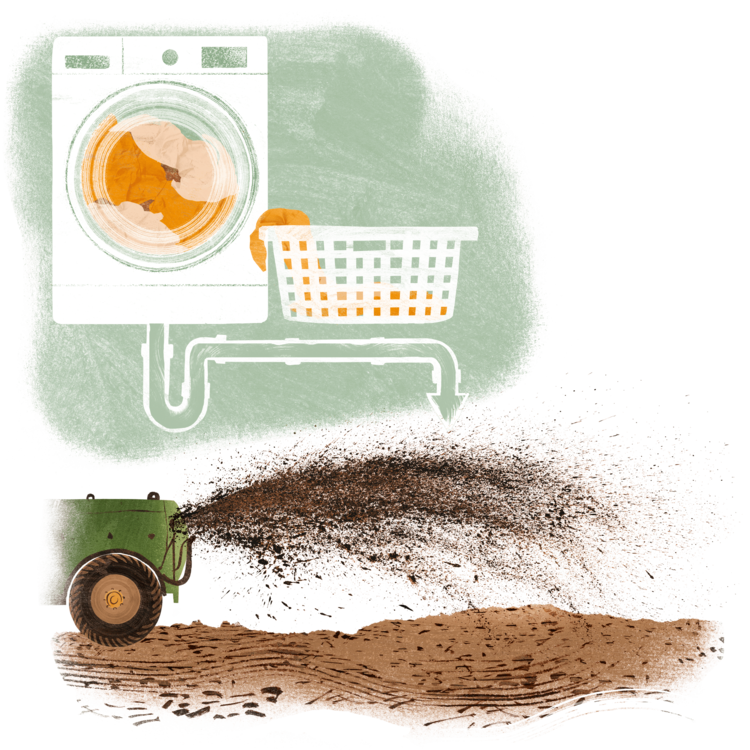 |
Along with other waste, these fibers and fragments accumulate as sewage sludge. In the US and many European countries, this sludge is often used in fertilizer, inadvertently turning agricultural land into a vast global microplastic reservoir. At a wastewater treatment plant in Wales, 1% of the sludge weight was found to be plastic.
From here, the plastic begins its journey through the food chain. The shirt's lifespan may end after a few washes, but its constituent parts carry microplastics around the natural world for centuries before reaching human consumption.
Spread on fields as fertilizer, the tiny fibers infiltrate the soil ecosystem. An earthworm in a wheat field might mistake a fiber for a piece of leaf or root. However, unlike organic matter, the worm cannot digest it.
In April, a research team from the University of Sussex (UK), led by Emily Thrift, published a scientific report on the Oxford University academic platform about microplastic pollution in invertebrates. The report found that one-third of earthworms and one-fourth of snails had ingested plastic.
Microplastics in soil, worms, snails, and beetles. Source: The Guardian
">
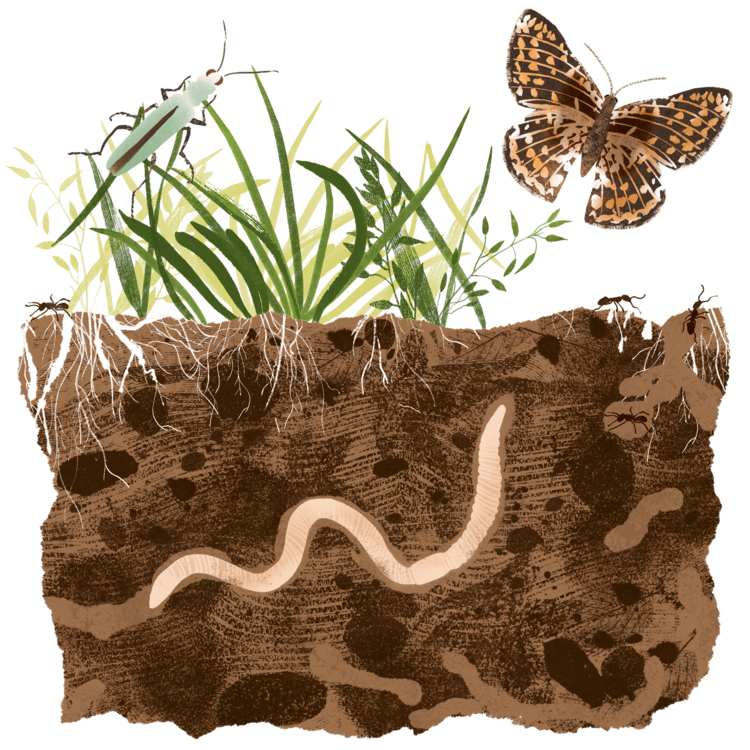 |
With plastic in their guts, worms struggle to absorb nutrients. Plastic consumption often leads to liver, kidney, and stomach problems in animals, affecting their reproductive abilities. Even the creatures that maintain soil fertility suffer from plastic pollution.
Plastic pollution in marine environments is well-documented. But according to the United Nations, soil contains more microplastics than the ocean. Furthermore, small creatures like worms, snails, and beetles are low on the food chain, allowing microplastics to continue their journey up to larger animals, such as hedgehogs.
A study found plastic in the droppings of 4 out of 7 hedgehogs. Worms are not only consumed by hedgehogs, but also by birds and mice.
Microplastics in fields are found in higher-level animals like birds and mice. Source: The Guardian
">
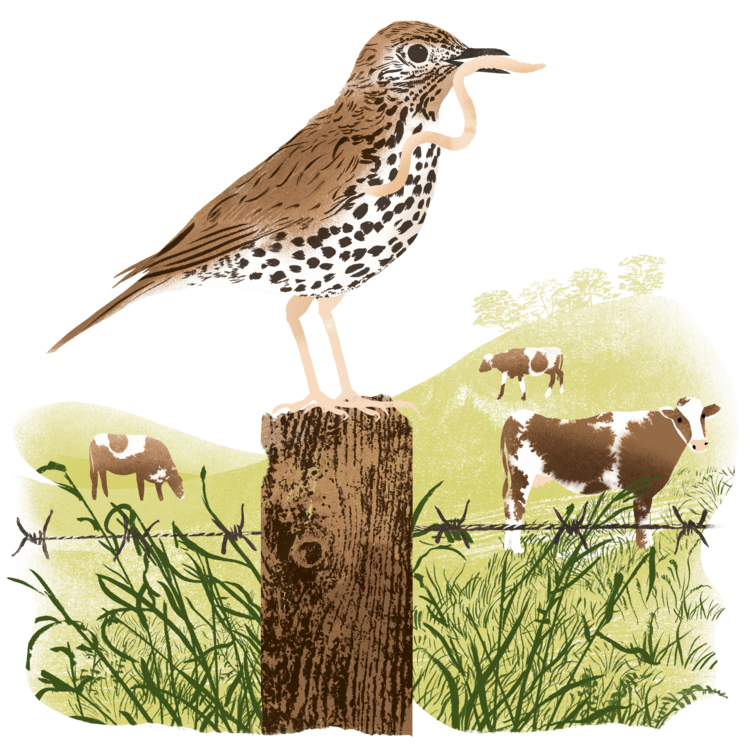 |
Insectivorous birds like swallows, nightingales, and blackbirds are indirectly consuming plastic through their prey. "Microplastics are now present everywhere in the food chain," said environmental biologist Professor Fiona Mathews of the University of Sussex. Meat, milk, and blood from farm animals also contain microplastics.
At the top of the food chain, humans consume at least 50,000 microplastic particles each year through food, water, and air. They have been found in blood, semen, lungs, breast milk, bone marrow, placentas, testicles, and brains.
Even after entering the animal food chain, the polyester fiber from your shirt remains intact. Eventually, it returns to the soil when the host organism dies, starting a new cycle.
While the host body decomposes, the polyester fiber persists for centuries. In the soil, it's plowed up by farmers. Its light weight allows it to be carried by the wind from depleted soil. Heavy rain washes it into rivers, eventually reaching the sea.
Microplastics have been found in fish and freshwater shrimp. Source: The Guardian
">
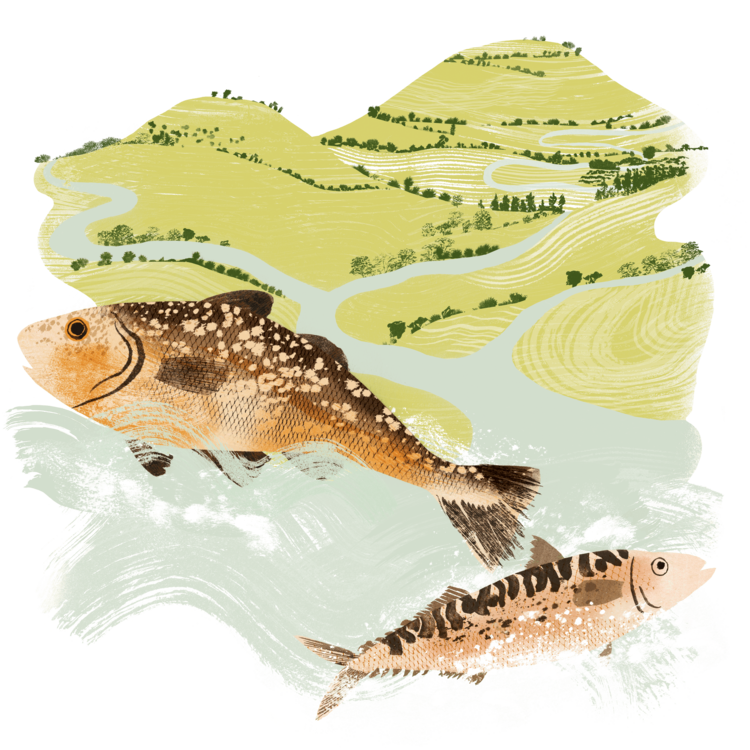 |
This movement through natural systems over years is known as the "plastic loop." Scientists have discovered the equivalent of 300 meters of stacked plastic water bottles in microplastic particles falling on the Grand Canyon, Joshua Tree, and other US national parks. Even the most remote places are polluted. One scientist found 12,000 microplastic particles per liter in samples from the Arctic Ocean.
Over time, the plastic fiber doesn't decompose but fragments into smaller pieces, leaving nanoparticles in the air, water, and soil. These can become small enough to penetrate plant cell walls as roots absorb nutrients from the soil.
Microplastics in soil and air. Source: The Guardian
">
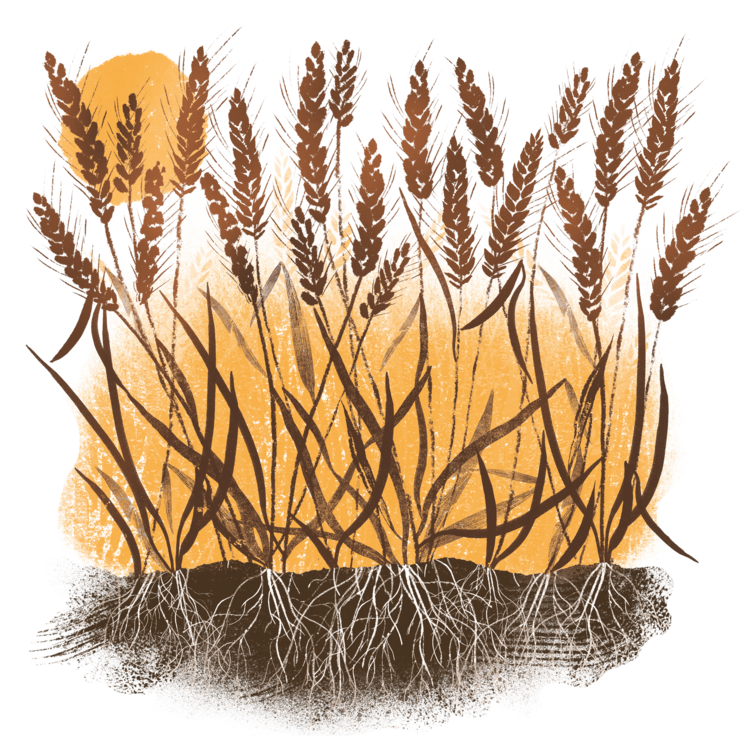 |
Studies show that nanoplastics are found in the leaves and fruits of plants. Once inside, they affect photosynthesis, blocking nutrient and water channels, damaging cells, and releasing toxic chemicals. Staple crops like wheat, rice, and lettuce have been shown to contain plastic, providing another route into the human food chain.
Since the 1950s, humans have produced over 8.3 billion tons of plastic, the equivalent of one billion elephants. Plastic permeates packaging, textiles, agricultural materials, and consumer goods. Avoiding plastic is nearly impossible.
Microplastics are found in fish, rice, and milk. Source: The Guardian
">
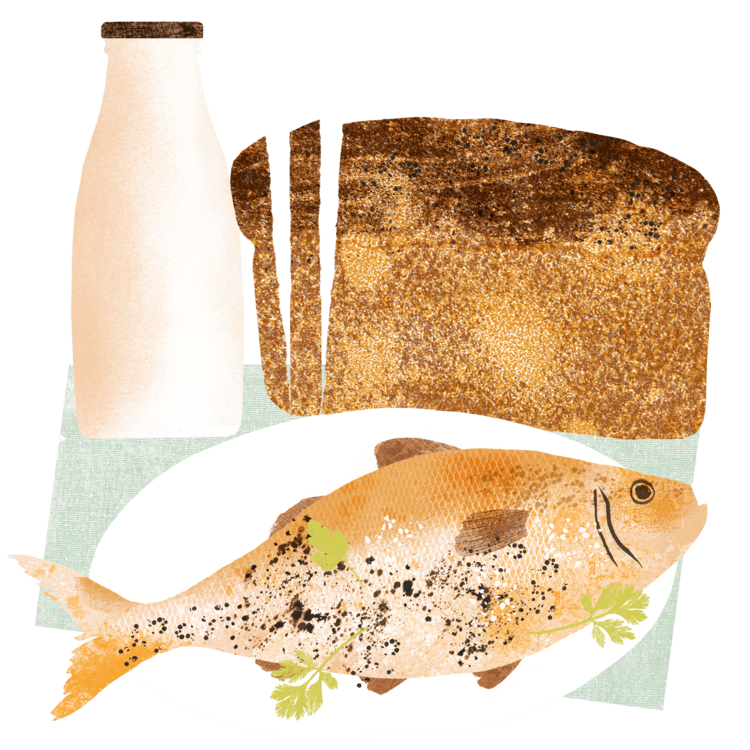 |
Emily Thrift, a plastics researcher at the University of Sussex, says fast fashion companies, beverage corporations, supermarket chains, and agricultural companies are not held accountable for the damage caused by microplastics. "Unless authorities implement policies and measures to hold large corporations responsible for plastic, I don't think the situation will change much," she said.
Bao Bao (according to The Guardian)












